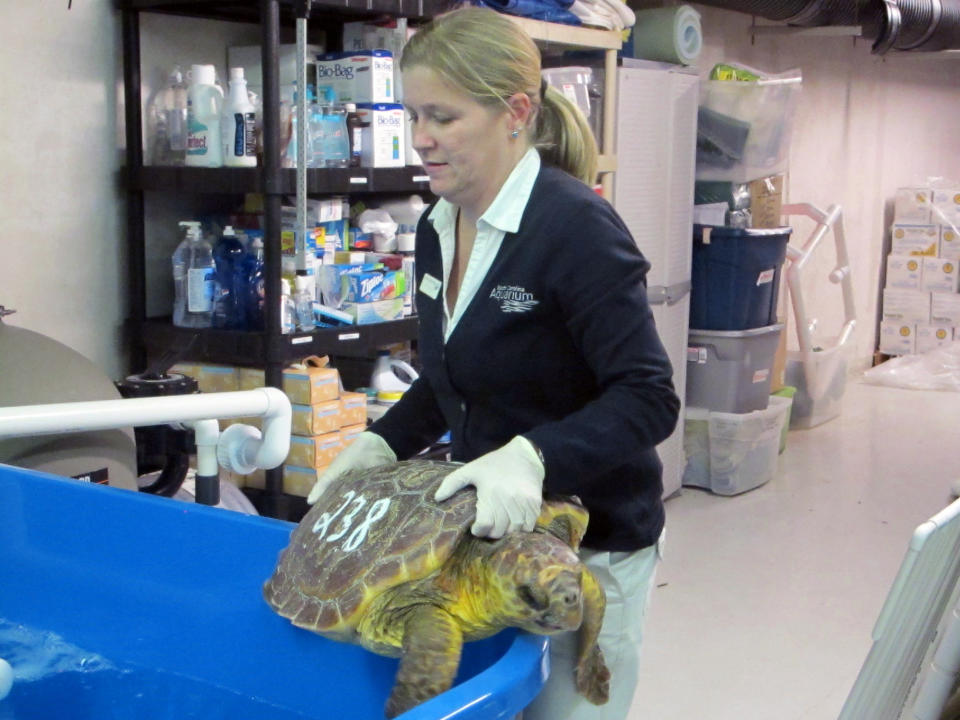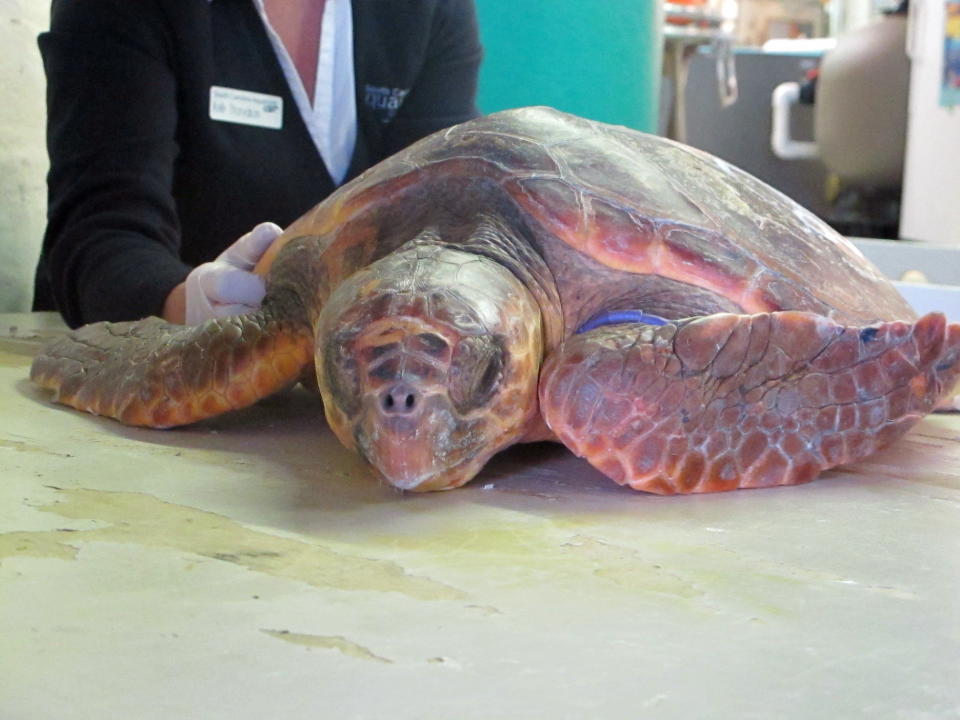740 miles of US coast critical loggerhead habitat
CHARLESTON, S.C. (AP) — A federal agency is designating 740 miles of beaches from North Carolina to Mississippi as critical habitat for loggerhead sea turtles, including 175 miles in the Carolinas.
While loggerheads have been listed under the Endangered Species Act since 1978, the U.S. Fish and Wildlife Service in 2011 changed the loggerhead listing from a single worldwide designation to nine distinct groups to focus on need for conservation in specific areas.
So the nesting areas are now being designated as critical habitat for the recovery of the species threatened in the northwest Atlantic. The areas selected have the highest densities of loggerhead nests.
"Only occupied habitat is being proposed as we determined this is adequate for the conservation of the species," Sandy MacPherson, the national sea turtle coordinator for the U.S. Fish and Wildlife Service, told reporters Friday.
She said that about 19 percent of the shoreline in the six states is owned by the federal government; 21 percent is owned by state governments; and the rest is private.
"We do not envision additional landowner use restrictions that will result from this critical habitat designation," she said, adding most coastal landowners are aware of state and federal rules designed to protect sea turtles.
"It's an informative process that identifies the habitats necessary for the recovery of the species," said Jennifer Koches, a spokeswoman for the Fish and Wildlife Service in Charleston. "Anytime there is a federal project such as beach renourishment or dredging activities — things that are funded or permitted by the federal government — applicants have to consult for impacts on federal species."
At the time the agency changed the loggerhead designation to nine groups, it said it did not have enough data to identify the critical habitat. In January, three nonprofit groups, including Oceana Inc., sued in federal court in San Francisco seeking to have those designations made.
"It's something we're required to do ... and it was something we were working on when we received the complaint," MacPherson said.
Amanda Keledjian, a marine scientist with Oceana, said the National Marine Fisheries Service should now "designate (as critical) off-shore areas as well as waters directly adjacent to nesting beaches if they want these vulnerable populations to recover." Sea turtles often get tangled in trash such as fishing lines or are hit by boat propellers and injured.
The new designation lists 96 miles of shoreline in North Carolina that includes eight nesting areas ranging from Carteret County south to Brunswick County. In South Carolina, 79 miles of shoreline has been designated critical habitat, including 22 nesting areas from Georgetown County south to Beaufort County.
The loggerheads seem to be recovering in South Carolina — state Department of Natural Resources figures showing a record 4,600 nests were found last year.
People like sea turtles and are more aware of their nesting, Koches said.
"They are cute and cuddly and everyone can fall in love with a sea turtle," she said. "We have a hard time getting people to embrace our freshwater mussels that are critically endangered. It's hard to get people to wrap their hearts around a mussel. A sea turtle is something different."



